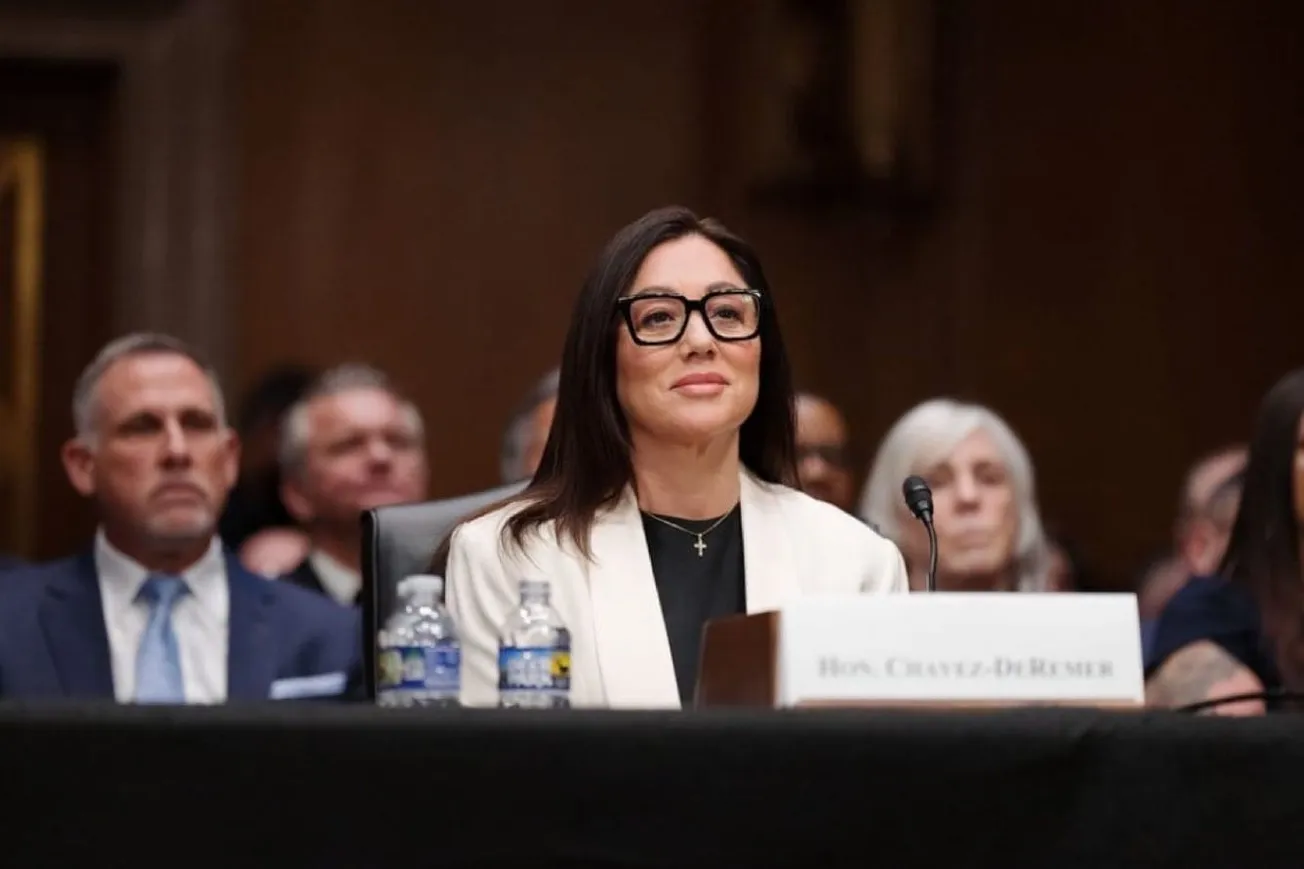The RealClearMarkets/TIPP Economic Optimism Index, a leading gauge of consumer sentiment, ticked up slightly by 0.7% in August to 44.5. Since September 2021, the Index has remained in negative territory (36 consecutive months). August’s reading of 44.5 is 9.4% lower than the historical 283-month average of 49.1.
Optimism among investors dropped 2.2% from 53.6 in July to 52.4 in August, while it increased by 3.3% among non-investors, from 39.4 in July to 40.7 in August.
The RCM/TIPP Economic Optimism Index is the first monthly measure of consumer confidence. It has established a strong track record of foreshadowing the confidence indicators issued later each month by the University of Michigan and The Conference Board. (From February 2001 to October 2023, TIPP released this Index monthly in collaboration with its former sponsor and media partner, Investor's Business Daily.)
RCM/TIPP surveyed 1,488 adults from July 31 to August 2 for the August index. The online survey utilized TIPP's network of panels to obtain the sample. A more detailed methodology is available here.
RCM/TIPP Economic Optimism Index
The RCM/TIPP Economic Optimism Index has three key components. In August, one component improved, while the other two declined. The Index and its components range from 0 to 100. A reading above 50.0 signals optimism, and below 50.0 indicates pessimism. 50 is neutral.
- The Six-Month Economic Outlook, which measures how consumers perceive the economy's prospects in the next six months, improved from 40.7 (July) to 43.4 (August), marking a 6.6% gain. In October 2023, this component posted 28.7, its lowest reading since the Index debuted in February 2001. The component has been below 50.0 (pessimistic territory) for 36 consecutive months since September 2021.
- The Personal Financial Outlook, a measure of how Americans feel about their own finances in the next six months, declined by 0.2% from its previous reading of 51.9 in July to 51.8 this month. In January, the component had crossed above the neutral reading of 50.0. It remained above 50.0 in the positive territory for five consecutive months, only to drop below 50.0 in June. It bounced back above 50.0 in July.
- Confidence in Federal Economic Policies, a proprietary RCM/TIPP measure of views on the effectiveness of government economic policies, declined from 40.0 in July to 38.3 this month, reflecting a 4.3% drop. Similar to the outlook component, this component has been below 50.0 in the pessimistic territory for 36 consecutive months since September 2021.
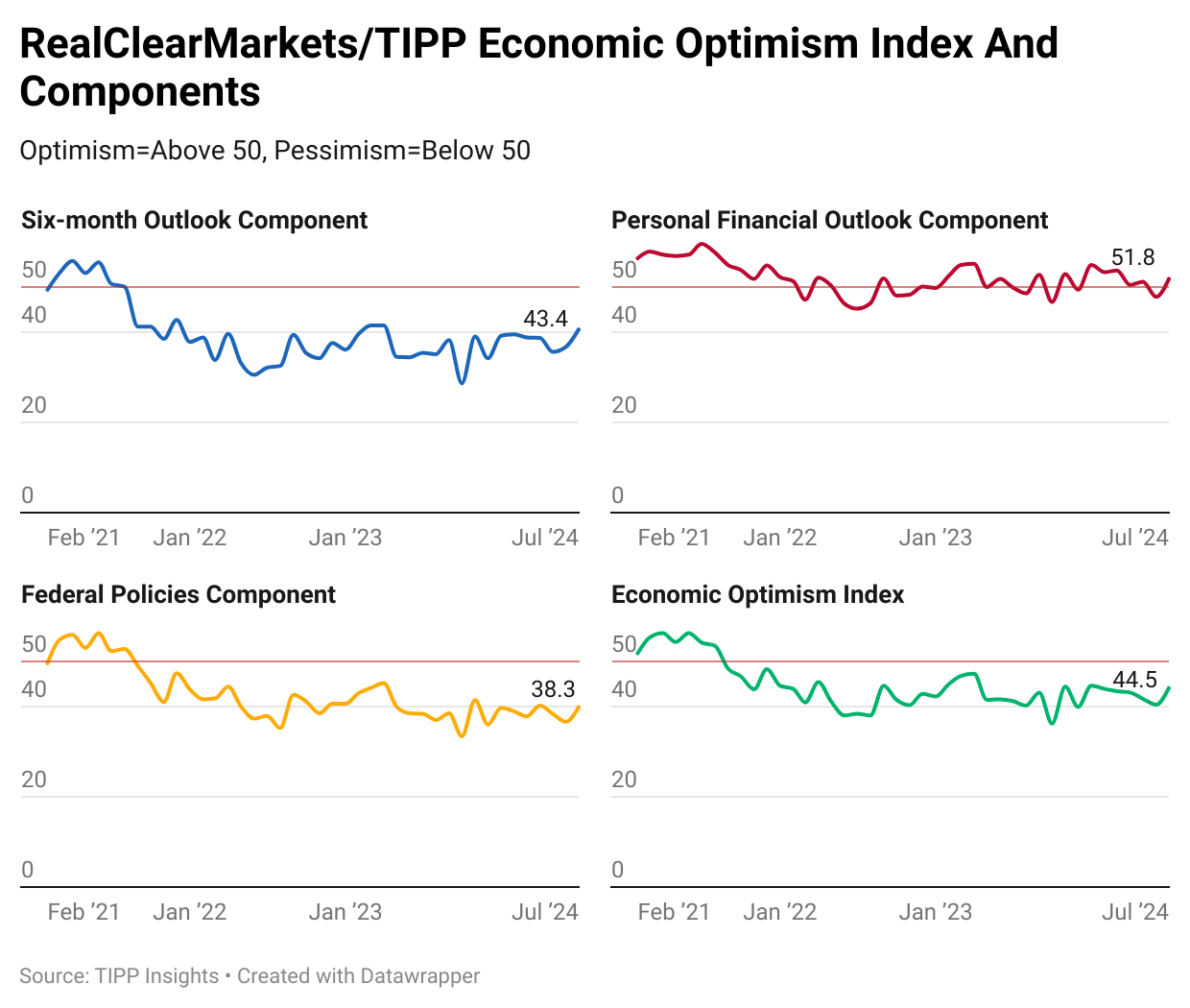
Party Dynamics
Democrats showed the highest confidence in August, at 60.9, increasing from 59.6 in July, a 2.2% gain.
Meanwhile, Republicans' confidence increased 0.2 points to 33.1 this month, a gain of 0.6%. Since the last presidential election, it has stayed in the pessimistic zone for 45 consecutive months.
Independents’ confidence has been in pessimistic territory for 53 months since April 2020, the month after the onset of the pandemic. In August, independents declined 1.3 points, or 3.4%, and posted 37.5 on the Index.
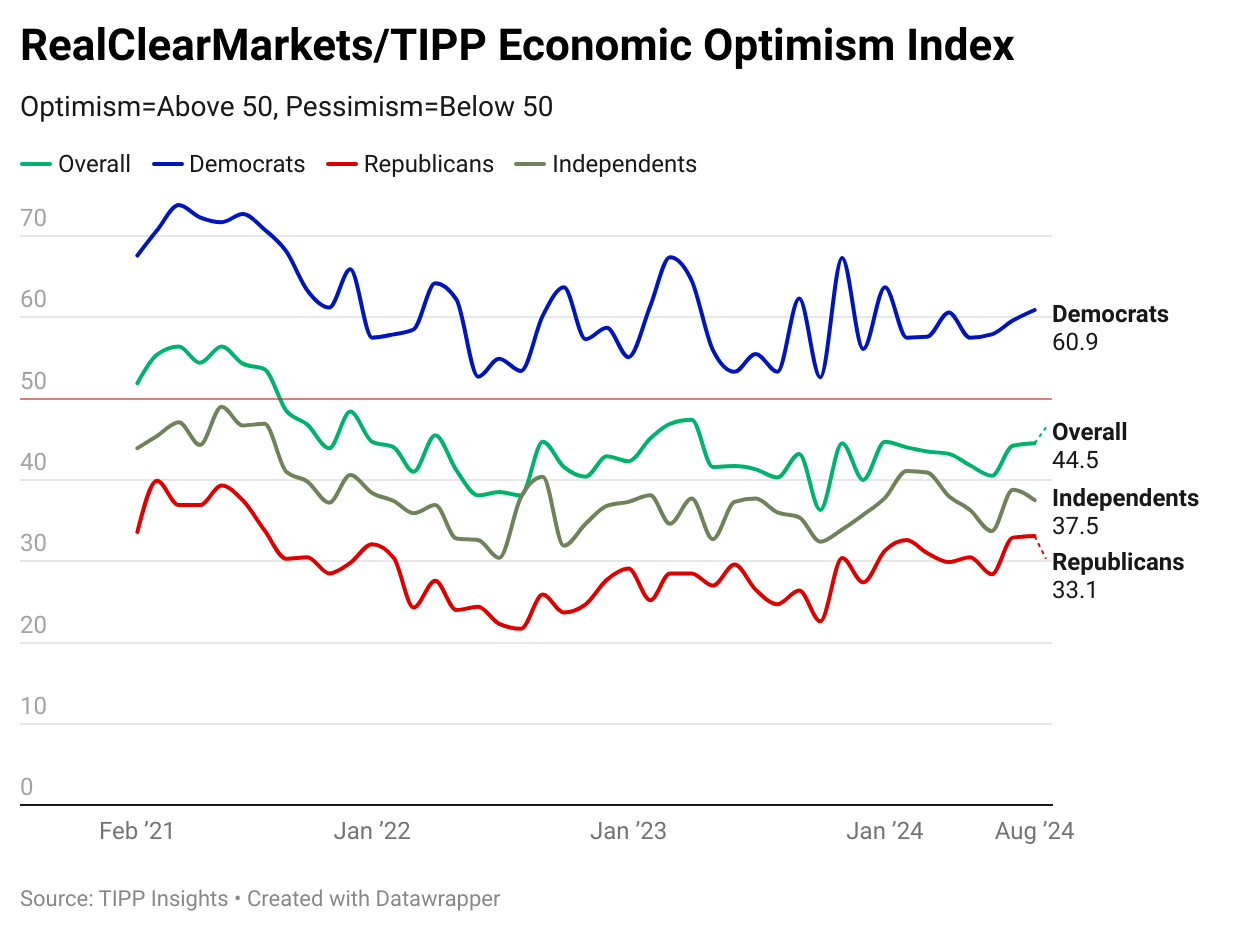
Investor Confidence
Respondents are considered "investors" if they currently have at least $10,000 invested in the stock market, either personally or jointly with a spouse, either directly or through a retirement plan. Thirty percent of respondents met this criterion, and 65% were classified as non-investors. We could not ascertain the status of five percent of respondents.
Optimism among investors dropped 2.2% from 53.6 in July to 52.4 in August, while it increased by 3.3% among non-investors, from 39.4 in July to 40.7 in August.
The economic optimism gap between investors and non-investors reduced to 11.7 in August from 14.2 in July. It was 8.8 in June and 6.2 in May.
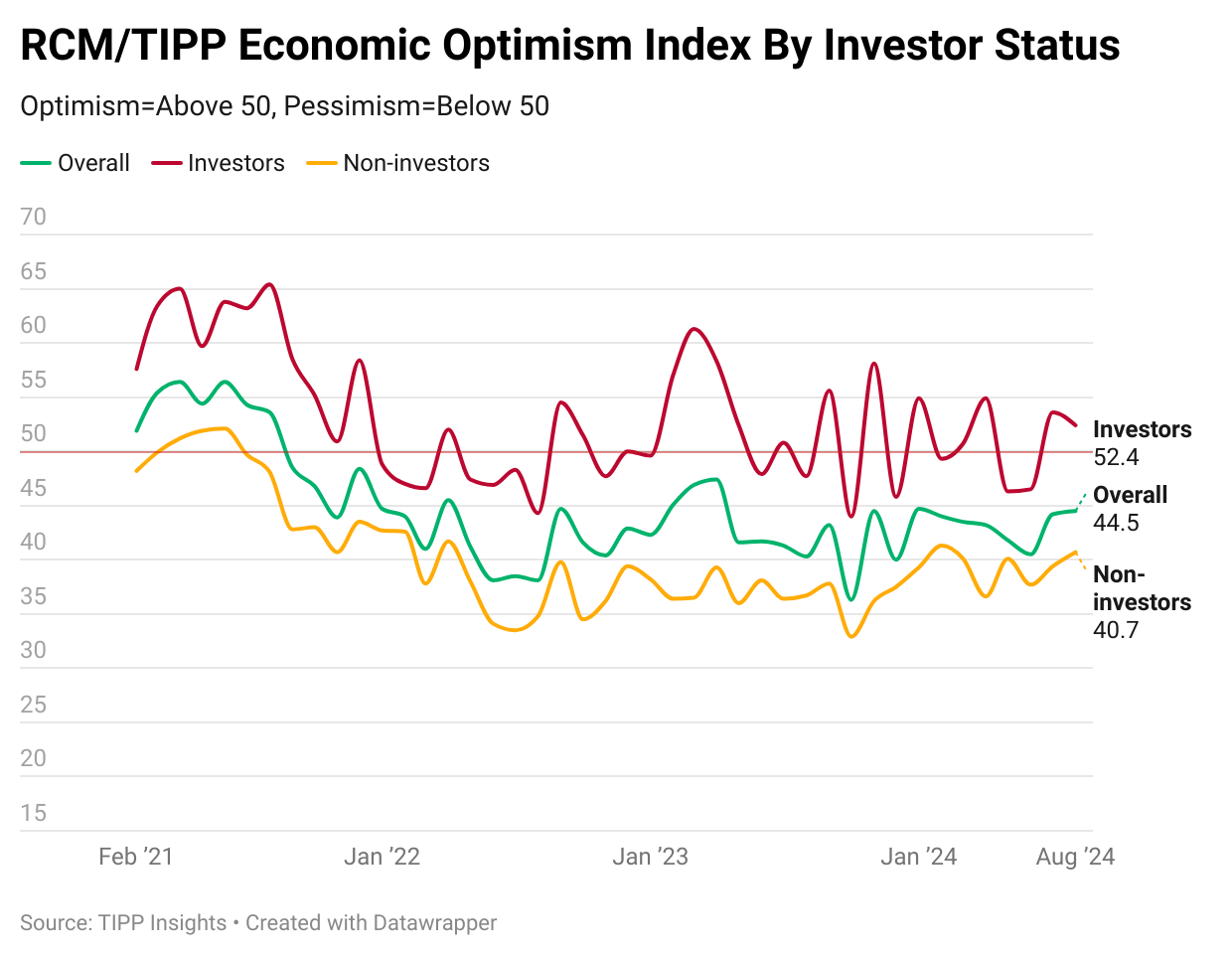
Momentum
Comparing a measure's short-term average to its long-term average is one way to detect its underlying momentum. For example, if the 3-month average is higher than the 6-month average, the indicator is bullish. If the 6-month average exceeds the 12-month average, the same holds true.
In August, the Economic Optimism Index and its three components are higher or the same as their respective three-month moving averages, indicating a positive trend.
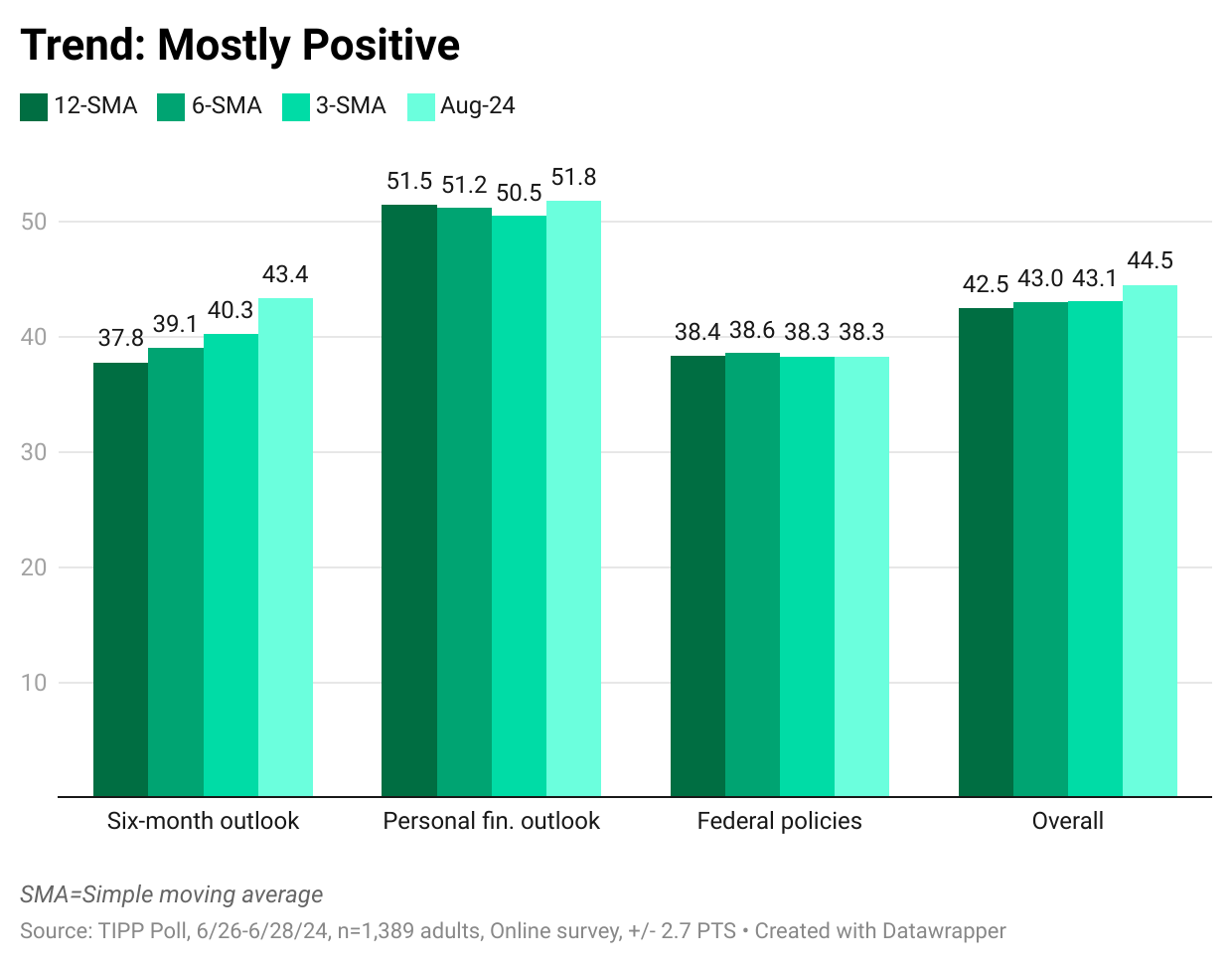
Demographic Analysis
The number of groups in the positive zone indicates the breadth of optimism in American society. This month, three of the 21 demographic groups we track, investors (52.4), Blacks/Hispanics (54.1), and Democrats (60.9), are above 50.0, indicating optimism on the Economic Optimism Index.
The number of groups in the positive zone oscillated between two and five in 2024. In August, only three groups are in the positive zone.
Twelve of the 21 groups improved on the Index, compared to 21 in July, five in June, and five in May.
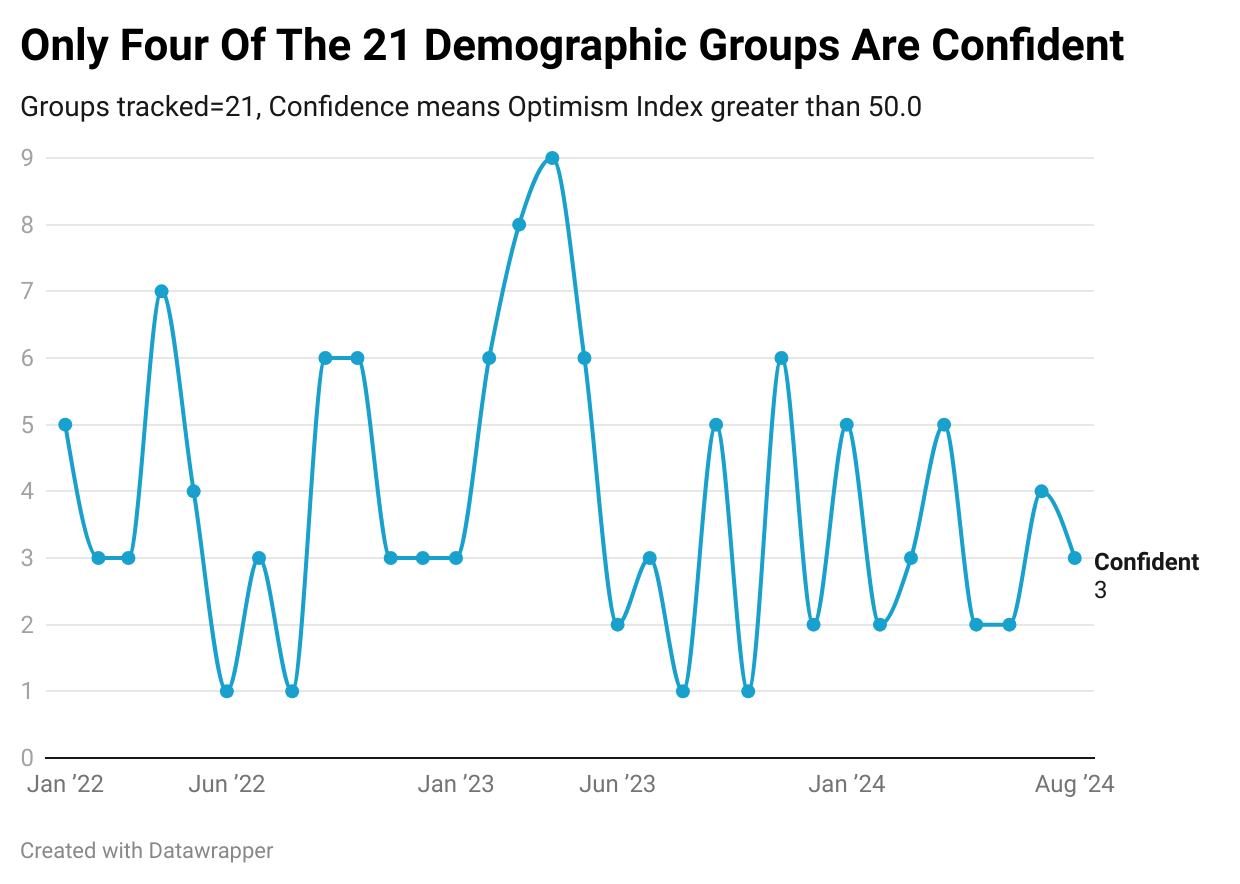
Economic optimism levels for 18 of 21 demographic groups were lower in June 2024 than the historical average of the past 283 months.
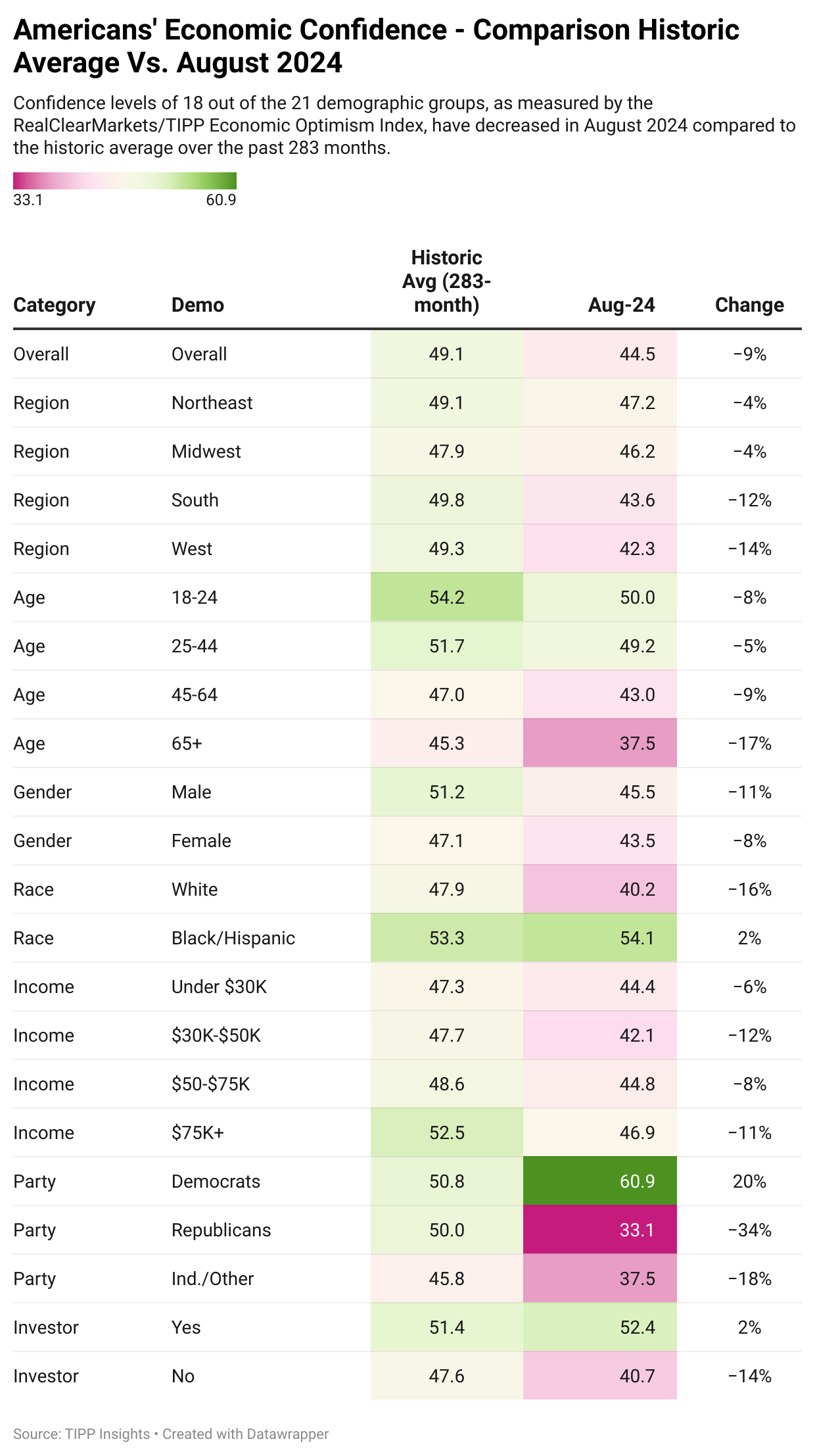
Inflation
The survey showed that 87% are worried about inflation. One-half (56%) are very concerned, and another 31% are somewhat concerned.
Americans continue to suffer because real wages have not increased, despite the CPI rate falling from a 40-year high of 9.1% in June 2022 to 2.9% in July 2024.
The Federal Reserve believes that long-run inflation of 2%, measured by the annual change in the price index for personal consumption expenditures, is most consistent with its maximum employment and price stability mandate.
You can read more on our analysis of inflation here.
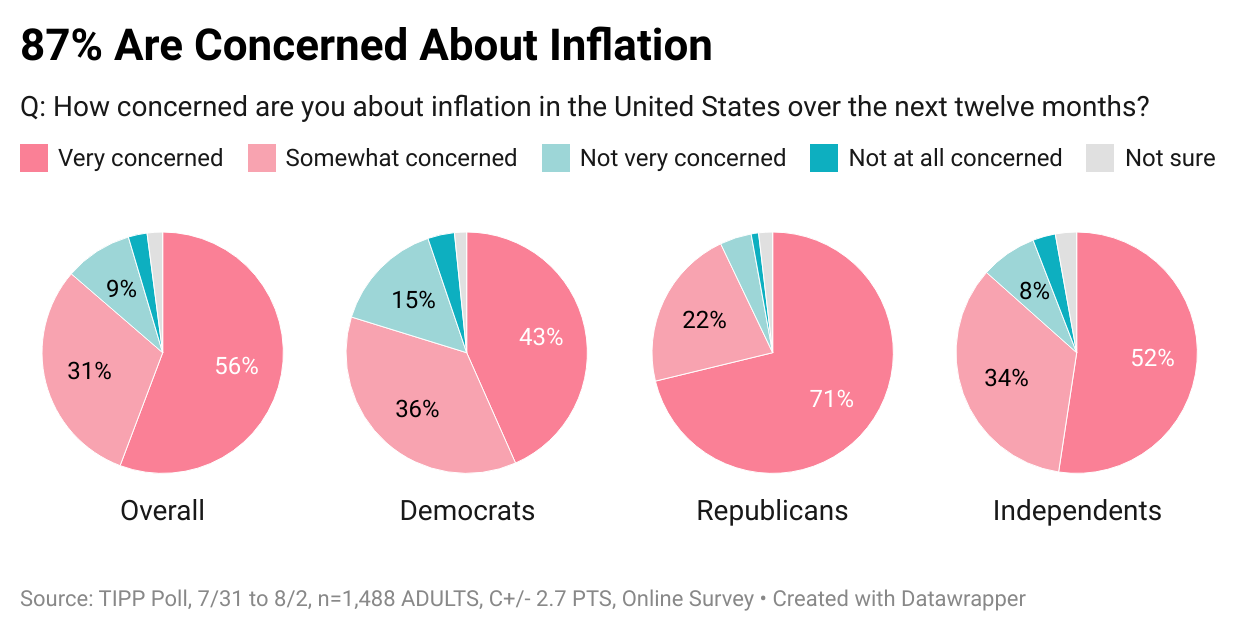
Recession
Four in ten (45%) believe we are in a recession, while 31% think we are not. Another 24% are not sure.
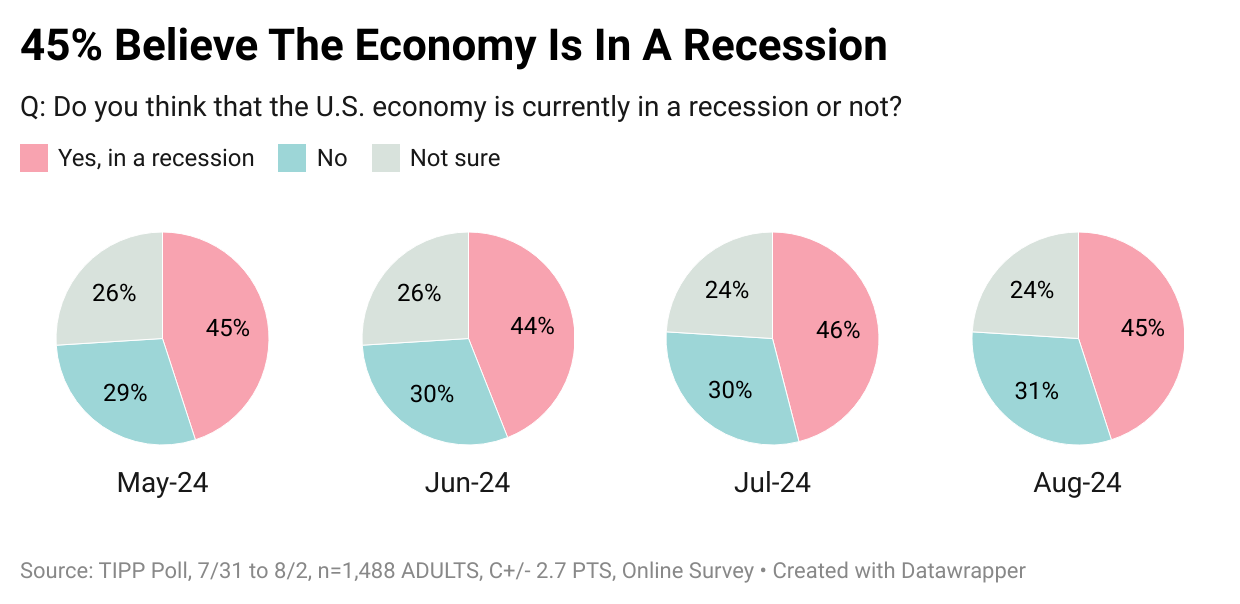
Further, nearly two-thirds (62%) think the U.S. economy is not improving, while 27% believe it is improving.
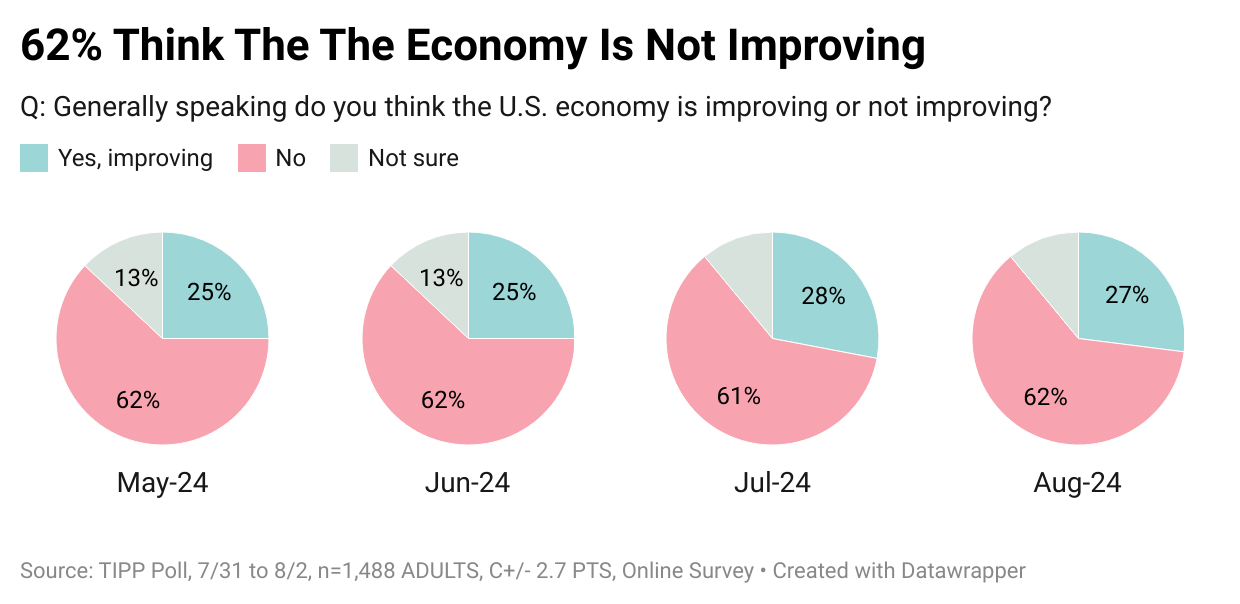
Fiscal Profligacy
Government spending has spiraled out of control, resulting in a national debt exceeding $35 trillion, which increases by $1 trillion every 100 days.
Most Americans are concerned about the sustainability of government spending. The high interest rates are also hurting Americans and sapping their confidence.
We anticipate a stagflationary economy in 2024. The risks on the downside outweigh those on the upside.


